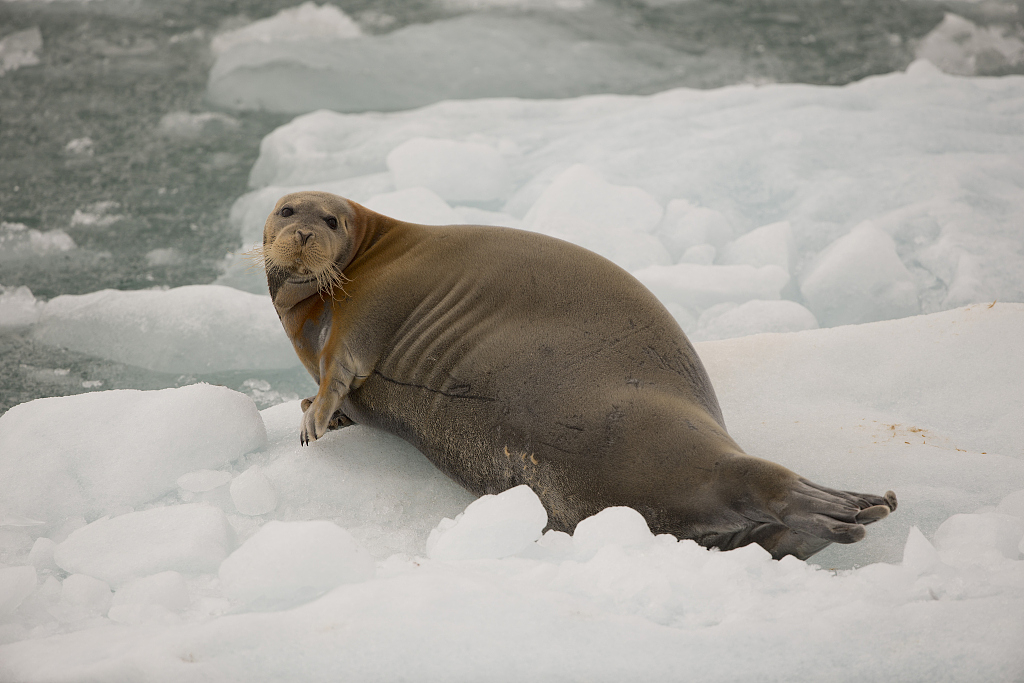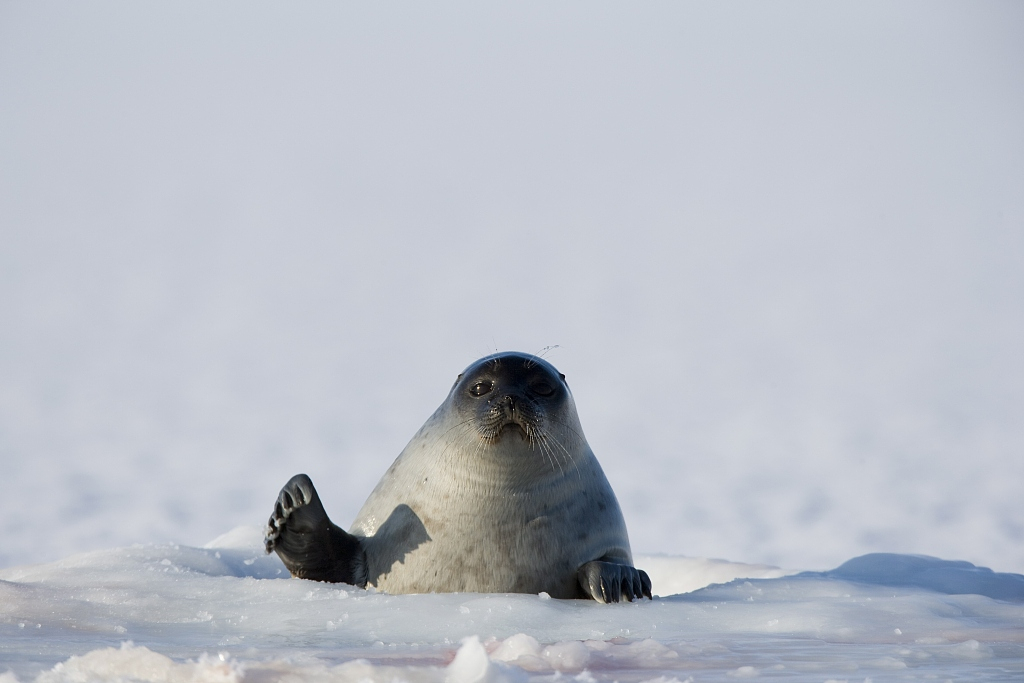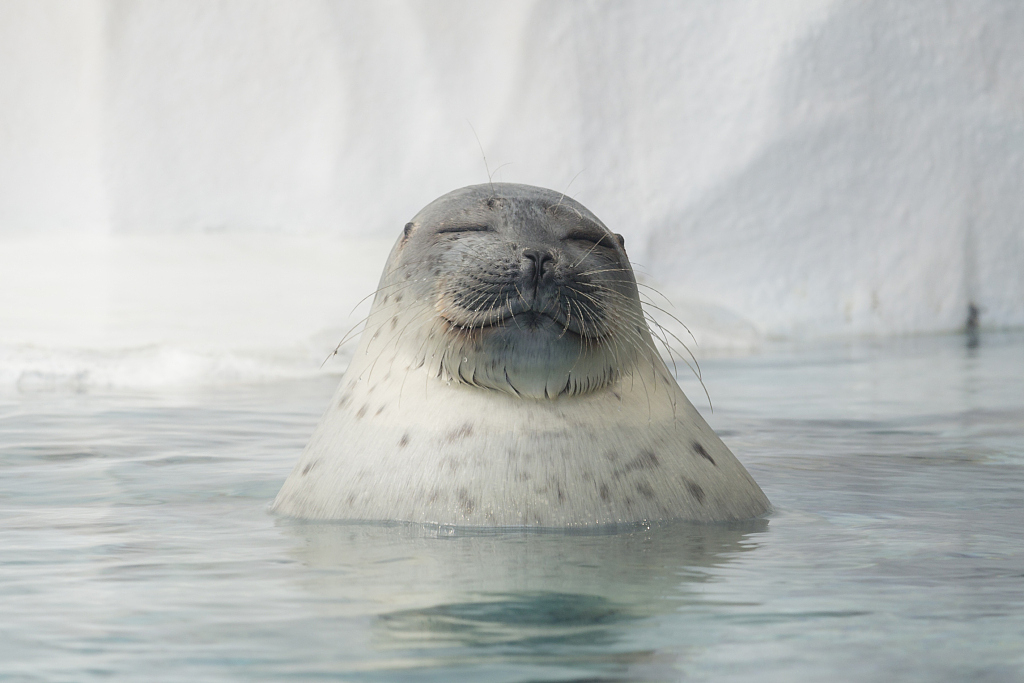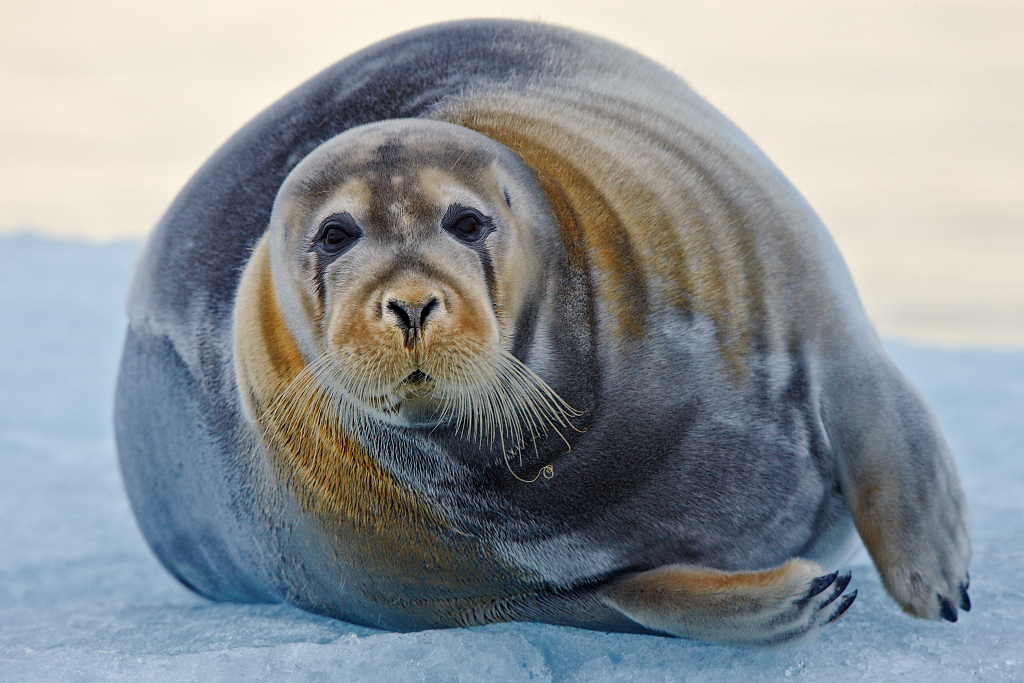
An environmental group sued the Trump administration on Thursday for failing to designate critical habitat for two species of seals that rely on sea ice off Alaska's northwest coast.
The Center for Biological Diversity sued the Department of Commerce and the National Marine Fisheries Service for not designating critical habitat for threatened ringed and bearded seals.

A bearded seal on ice. /VCG Photo
Designation of critical habitat for a threatened species is required by the Endangered Species Act a year after a listing. Federal agencies that authorize activities such as oil drilling within critical habitat must consult with wildlife managers to determine if threatened species will be affected.
Center for Biological Diversity attorney Emily Jeffers, who drafted the lawsuit, said by phone from Oakland, California, that additional protections are needed for ringed and bearded seals, which already are losing habitat because of climate warming.
"It's where the rubber hits the roads in terms of actual protections," she said.

A ringed seal staying in a whole on ice. /VCG Photo
Ringed and bearded seals live in the Bering and Chukchi seas. Though their numbers have not declined, they were listed as threatened in 2012 because of projected sea ice loss.
The state of Alaska, oil industry groups and others sued in two lawsuits and the listing was vacated. However, the 9th Circuit Court of Appeals last year reversed those decisions and said long-range data demonstrating a species decline is not required to adopt conservation policies to prevent the decline.
"If you wait until their demise is certain, it's too late," Jeffers said Thursday.

A ringed seal. /VCG Photo
Ringed seals are the smallest and most numerous of Alaska’s ice seals and the main prey of another threatened species, polar bears.
Ringed seals thrive in completely ice-covered Arctic waters because they maintain breathing holes with thick claws.
After snow covers breathing holes, females excavate snow caves on sea ice. Inside those lairs, they give birth to pups that cannot survive in ice-cold water until weeks later when they have grown a blubber layer. Early breakup of sea ice, less snow and even rain threatens lairs, exposing pups to polar bears, Arctic foxes and freezing temperatures.
Bearded seals get their name from short snouts covered with thick, long, white whiskers. They give birth and rear pups on drifting pack ice.

A bearded seal. /VCG Photo
NOAA Fisheries officials announced Wednesday that at least 60 ice seals, including ringed, bearded and spotted seals, have been found dead this week on coastlines north and south of the Bering Strait. The cause has not been determined.
The agency declared an unusual mortality event following abnormal molting and deaths of ice seals and walruses from 2011 to 2016. A definitive cause was not identified.
The agency estimated that 657 seals were affected over those six years. Biologists confirmed symptoms in 233 dead and stranded seals, 179 seals killed by hunters and 245 live seals checked in health assessments.
(Cover image via VCG)
(If you want to contribute and have specific expertise, please contact us at nature@cgtn.com)

Copyright © 2018 CGTN. Beijing ICP prepared NO.16065310-3
Copyright © 2018 CGTN. Beijing ICP prepared NO.16065310-3